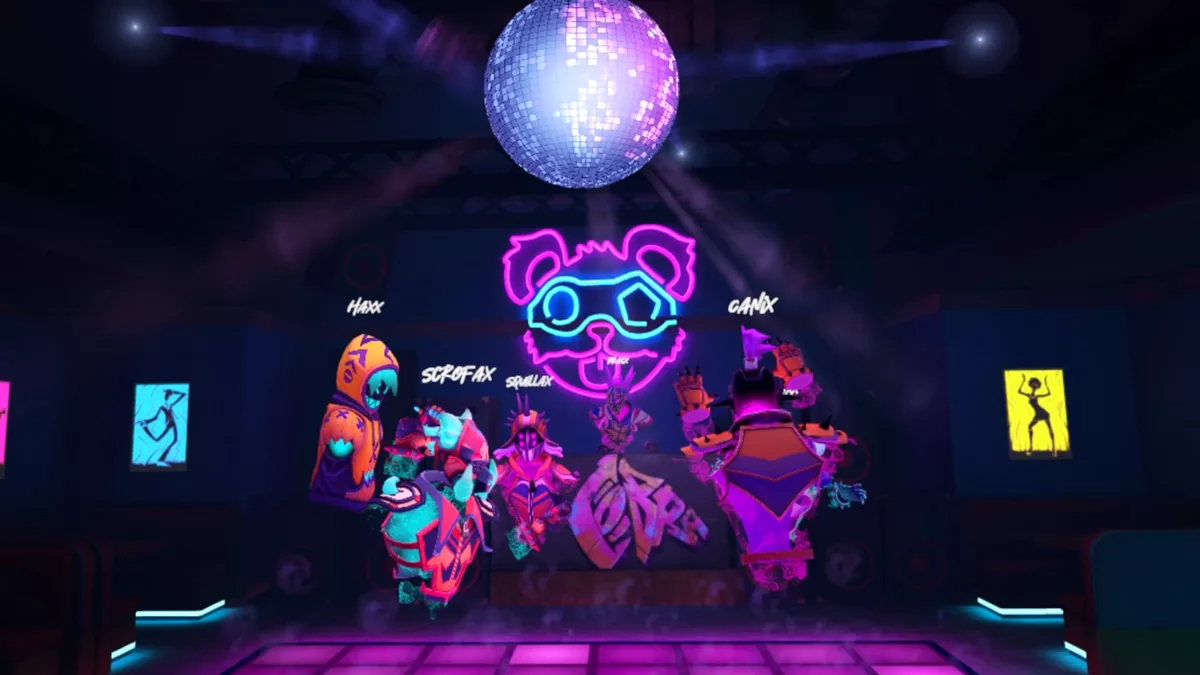One Year of VR Dueling in Blaston
More than 3.6 million duels have been played since Blaston’s launch on October 8, 2020. But before we dive into how the game has evolved let’s take a look at how it came to be.
When our Chief Creative Officer Mathieu Castelli joined Resolution Games, he discovered the magic of connecting real-body with gaming in VR. Mathieu has always tried to mix physical movement and games as well as building upon the feeling of presence. So when thinking of a game to prototype, melee dueling felt like it was checking a lot of boxes. By separating the two fighters just enough that they can’t touch each other and focusing on range interaction, to skip lack of contact feedback frustration, but not a cm further. Of course at such a short distance, the weapons have to be relatively slow moving… and this is how Blaston’s concept was born.
It was then a matter of finding the right timing (he was new to the company). It just so happened that Swedish summer soon came, and an amazing coder and Mathieu found themselves at the office alone for a week. Mathieu took his chance, and they had a functional prototype for our CEO Tommy Palm’s return the next Monday. Shortly after a team was put together to make what then became our VR 1:1 dueling game Blaston.
A lot has happened since that first prototype and today Blaston’s Concept Artist Louise is discussing how the game has progressed.
Please tell us briefly about your role and your contributions to the game.
Hi, I’m Louise and I’m the Concept Artist on the Blaston team and have been working with the game pretty much since the start. I’ve created many things for the game including designing the looks of our characters, arenas and, of course, our tools.
Can you tell us about Blaston’s art style?
Blaston’s art style started off with some inspiration restrictions. It couldn´t be gorey and it should feel more like a sport than a military mission. We wanted playfulness, but also something that looked visually appealing with the current hardware restrictions in VR. Finally we wanted to incorporate a sense of punk. Neon and glowing things are rather cheap for the engine to render. We use neon colors on the shots for instance to help players understand what’s happening and to follow them better than say a bullet with a metallic sheen. We also added glow to the core of every playable character, as well as in their hair, to give an opponent a quick point to aim for when shooting even when they're making fast head movements.
What inspired you specifically throughout the development process?
I was inspired a lot by other current games, such as Sonnie´s edge (Love, Death + Robots), Akali (League of Legends), Rocket League, Akira, Cyberpunk, Gladiator, but also things like graffiti art, underground club scenes and sports ads.
How has the game evolved since launch?
We’ve added several free updates to Blaston since launch including the Ozo Lounge (a social space for players to hang out and socialize), a single player campaign, a new environment called Scrapper Street and most recently in-game challenges with the Quick Draw update. We’ve also added more characters, tools with new mechanics and skins. Blaston is constantly evolving and it’s been fun to add more worldbuilding and narrative into the game.
What lessons have you learned since the game launched?
Oh boy, well... I’ve learned I really enjoy releasing details early about a game and working more directly with the player base. On past games I’ve been a part of we mostly kept everything secret until launch and hoped that the game hit the mark. It has been very motivating speaking to players on Discord, hearing their opinions and seeing through metrics, what works and what doesn’t. On a more personal note, I´ve learned to communicate my ideas better, and how to enjoy working with something more stylized than semi-realism.
Do you have any tips for others who want to make a 1:1 competitive VR title?
To me, the most important thing of all games is feeling like my actions have a purpose or a reason, and I think that is what sets a good game apart from a great game. Try a prototype of what you want the players to compete in early, and try to find something that really doesn’t work without the spatial awareness of VR. In my opinion, to be a fun VR title the game needs to do something that PC or console can’t.
If you also enjoy creating art for games or making multiplayer titles, check out our career site. Some of our current openings below:





